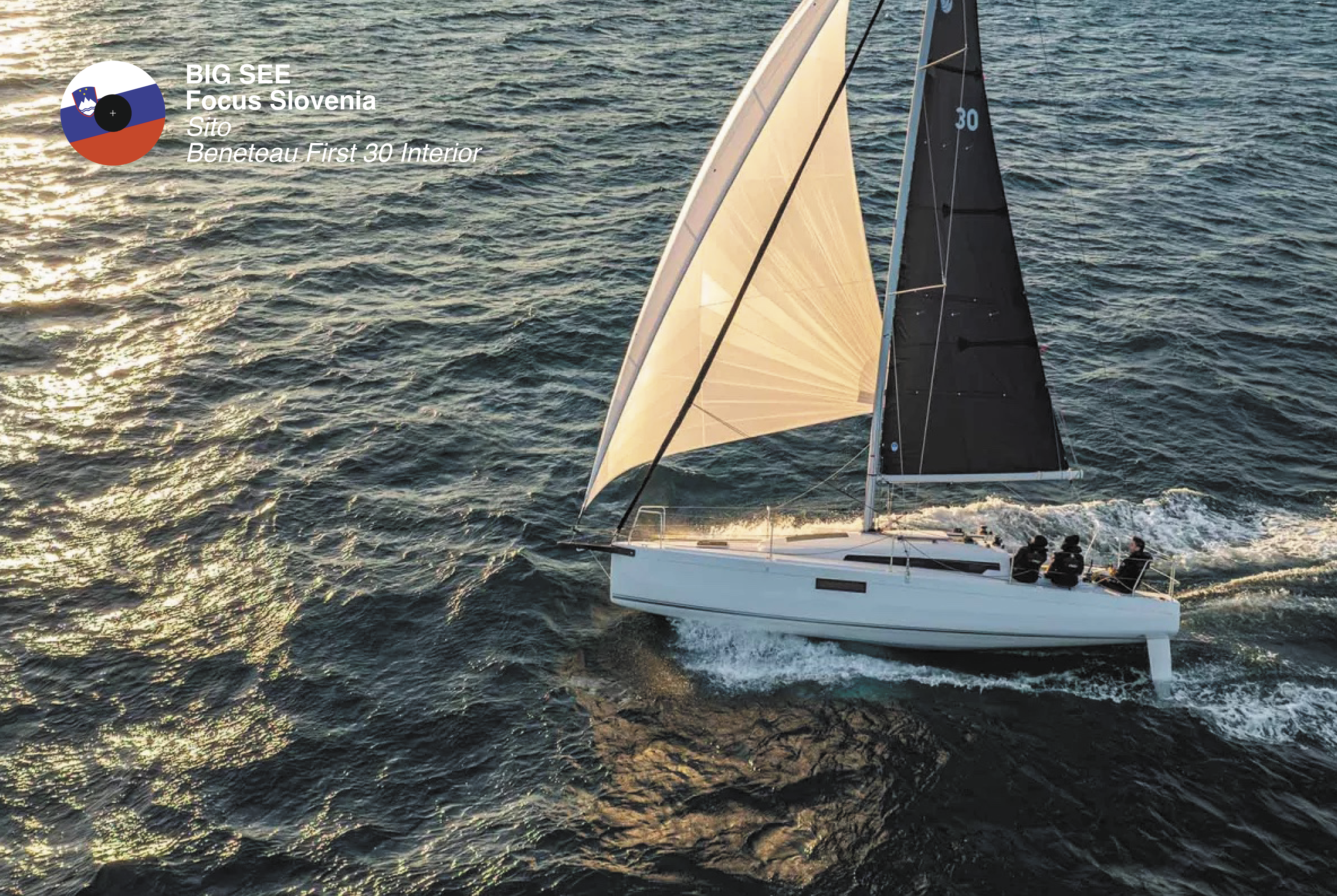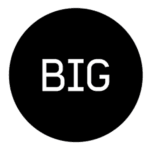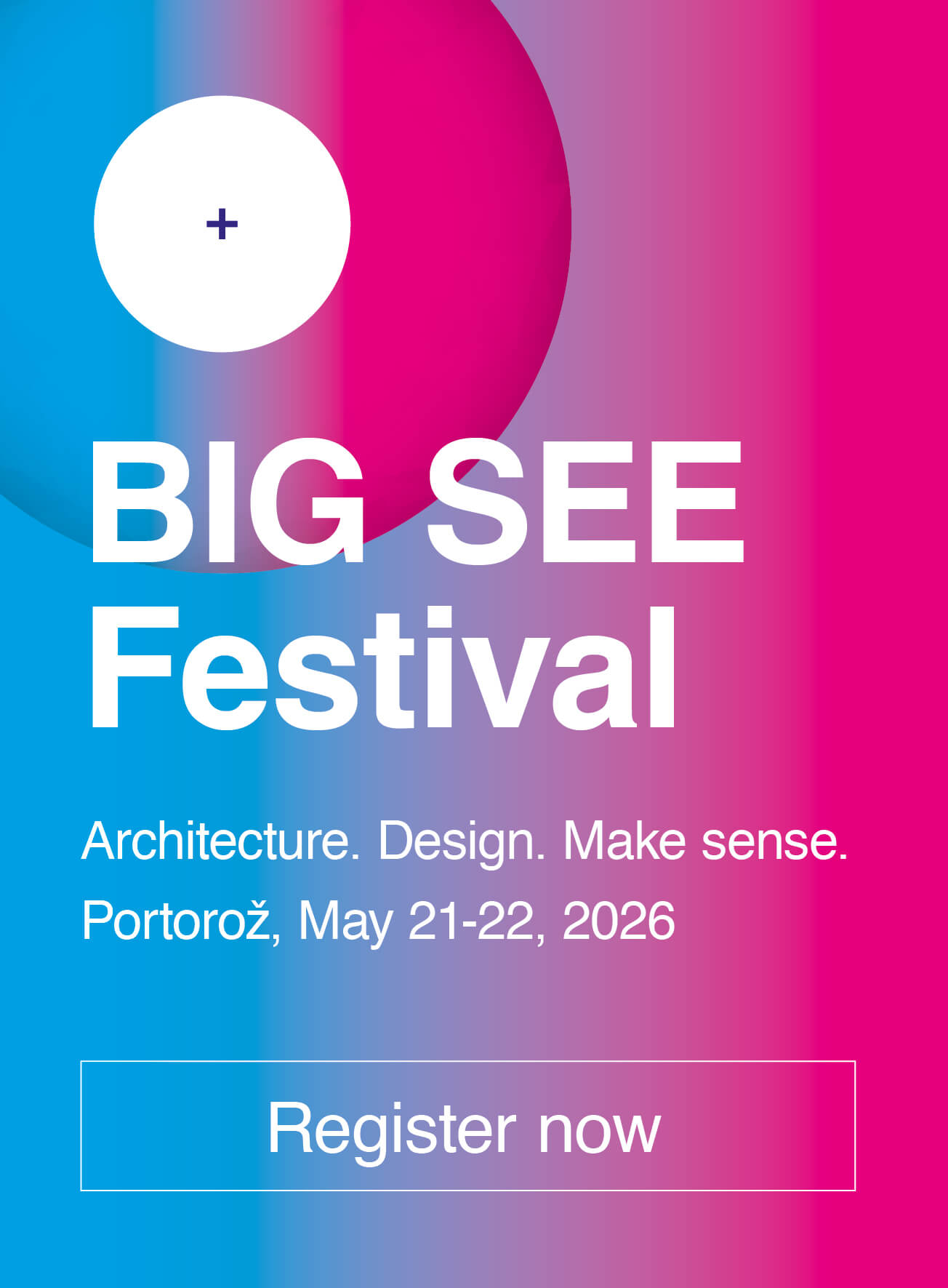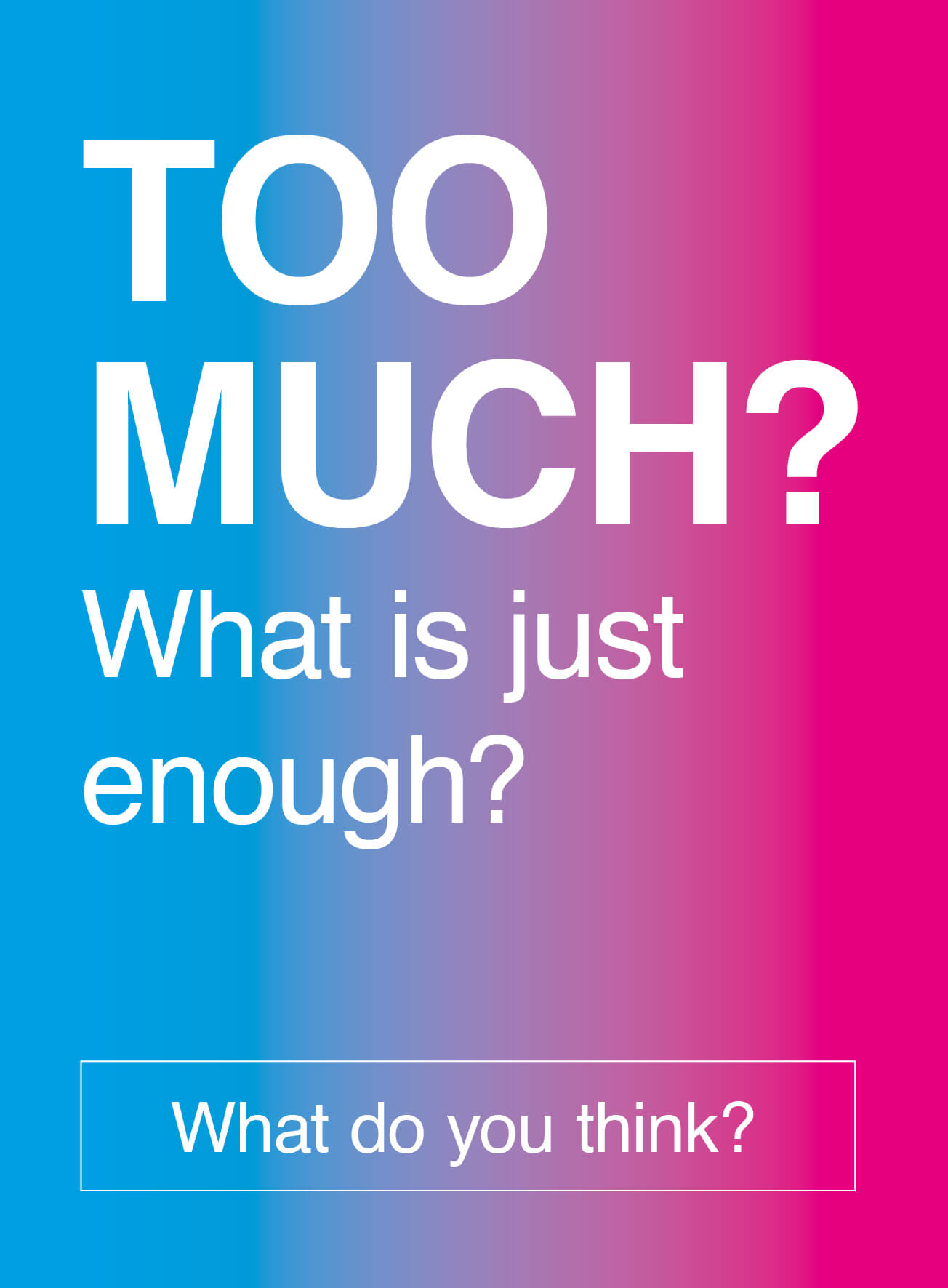3 Questions for Sito
Q: When you receive such a complex project – is your first reaction excitement, or do you sometimes feel a bit of doubt? How do you deal with that initial uncertainty? Do you have a design process you trust to carry you through any challenge?
A: The more complex the project, the more excited we get. Our strength lies in breaking down ambitious goals into actionable steps and inventing the right processes and tools to get there. We see it as our responsibility, as design consultants and practitioners, to bring clarity and lead the creative process.
Almost every project feels complex and fuzzy at the beginning. The real variable isn’t the challenge, it’s the team behind the brief. If the team is open to our approach and we work together on detailing the brief; defining business, market, and production goals, everything starts to fall into place. Design stops being guesswork and becomes about connecting and prioritising the right insights.
That’s why our collaborations grow smoother with every project and with every bit of added transparency. It’s also why our work with Beneteau felt solid, even when we had to pivot the project to meet market trends. With more experience working with a client, we can also refine how we collaborate. This time, for instance, we went radically iterative: zero minutes on formal presentations, just direct working sessions and quick iterations. It turned out to be the perfect fit, and it worked because the foundation of trust and alignment was already there
“The more complex the project, the more excited we get. Our strength lies in breaking down ambitious goals into actionable steps.”
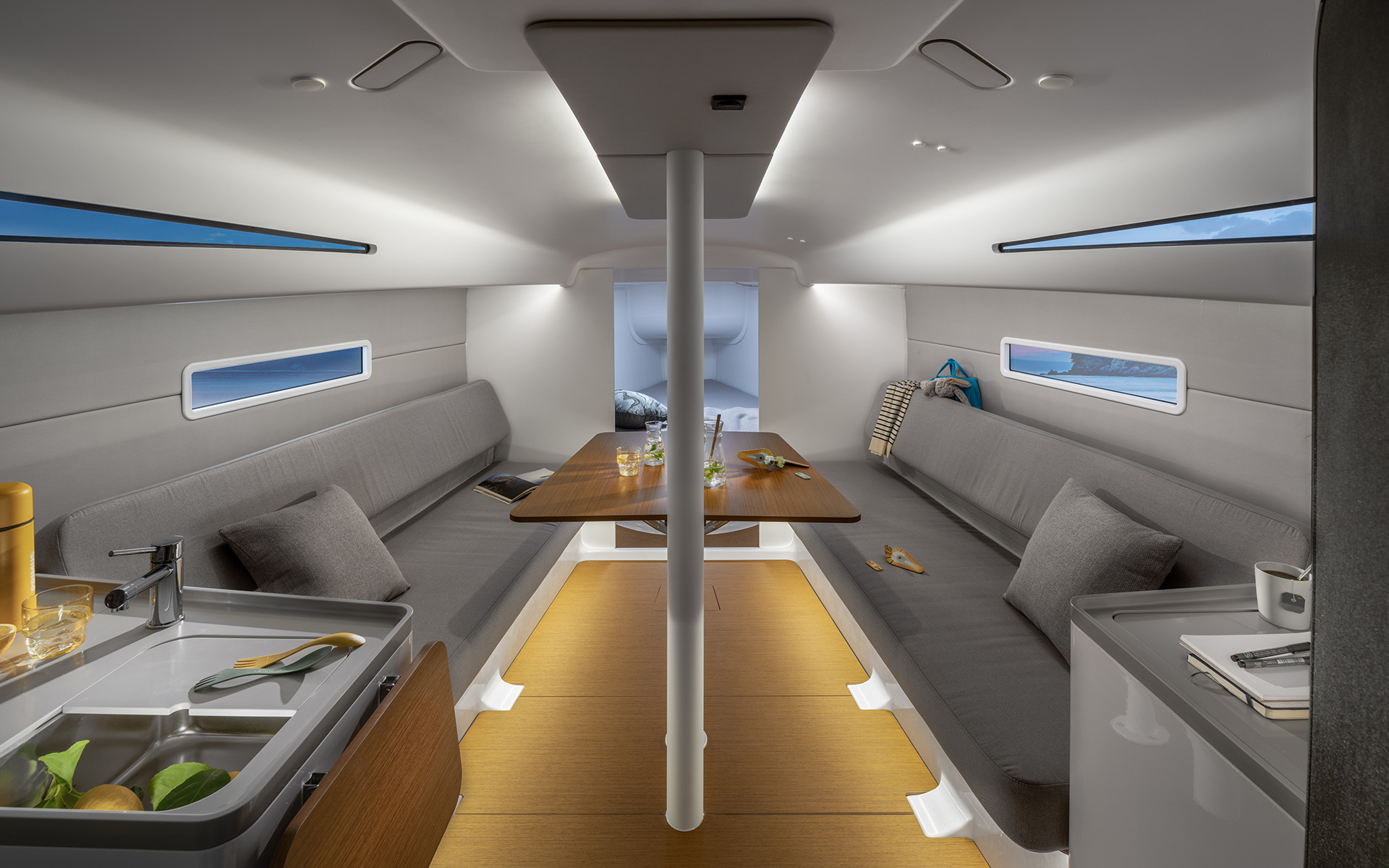
“If we work together on detailing the brief; defining business, market, and production goals, everything starts to fall into place. Design stops being guesswork and becomes about connecting and prioritising the right insights.”
Q: Your team has years of accumulated experience in designing sailboats. In what way did this experience shape your vision for the interior of the First 30?
A: Having experience with Beneteau’s sailboat development process, and the trust established with their team of experts, allowed us to shift the usual sequence. Normally, a project starts with the hull and deck design (which are not in our domain), and the interior is then fitted to their dimensions. This time, we began by designing the minimal-size interior that could still provide a maximal onboard experience, and only after that was it tested against the hull, deck, and legislative requirements. Through further iterations, we worked together to find the right balance between cost, interior comfort, and planning capabilities.
This approach created space for fresh ideas to improve the interior experience while quickly testing them against price and hull criteria before the final hull shape was locked. The process was more complex, with many variables undefined, but it also helped us capture the unique balance of price, comfort, and sailing joy that makes this boat stand out in the market.
In practice, this meant that information usually fixed at the beginning kept evolving throughout the project. Ideas weren’t polished before testing; we worked with an adjustable physical mock-up of the cabin that adapted with each iteration, and we used VR testing to run fast usability checks.
“Understanding the user beyond demographics is crucial – not just for better experiences, but to drive innovation and de-risk investment.”
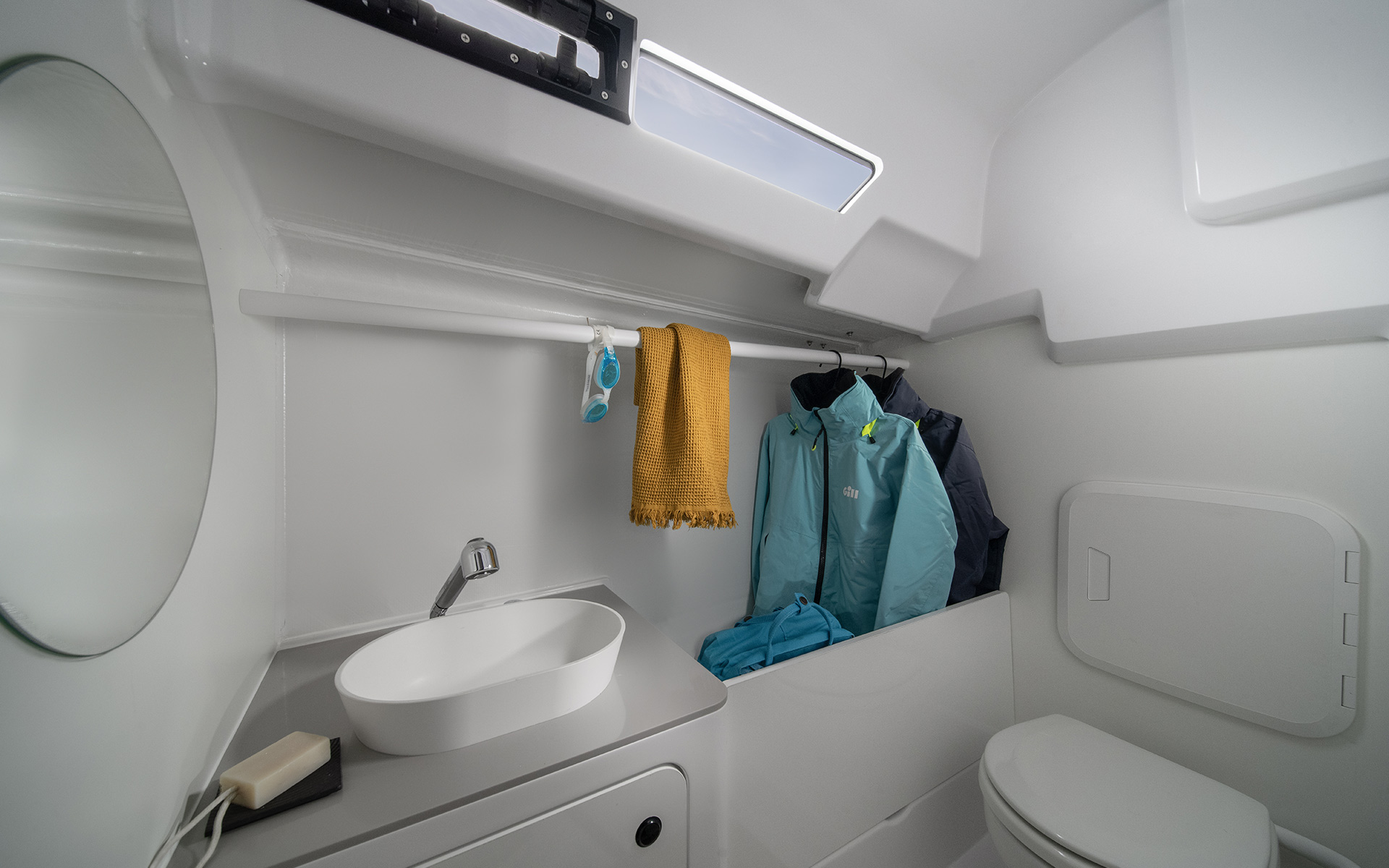
Q: How important is it for a designer to understand the mindset of a passionate sailor, and what methods help you define their needs and desires?
A: Understanding the user beyond demographics is crucial in every project. It’s why we always incorporate qualitative data into our design. Not just for the sake of better user experience, but also to drive innovation and de-risk investment. Our approach to research depends on the type of challenge, as well as practical realities like prior knowledge, budget, and timeline. There’s no such thing as “perfect” research; the real art lies in identifying which assumptions carry the greatest risks, and then choosing when and how to test them so resources are used wisely.
For this project, we began with a workshop with distributors. That helped us identify underserved and emerging market segments, which in turn clarified who the target sailors were and what basic product properties were needed. From there, we built on the research we had already done with Seascape. Beneteau added another layer with their own market research, which helped crystallise the ideal hull dimensions and value positioning.
Throughout the design process, we combine project-specific user insights with market knowledge, what we’ve learned across the industry, what we know about broader outdoor living and lifestyle trends, and our own hands-on experience. We’ve also been in constant contact with this community for more than 15 years through ongoing user research. In this case, one of the most valuable steps was testing both physical and VR prototypes with target users. That direct feedback was essential in fine-tuning the design.
“One of the most valuable steps was testing both physical and VR prototypes with target users to fine-tune the design.”
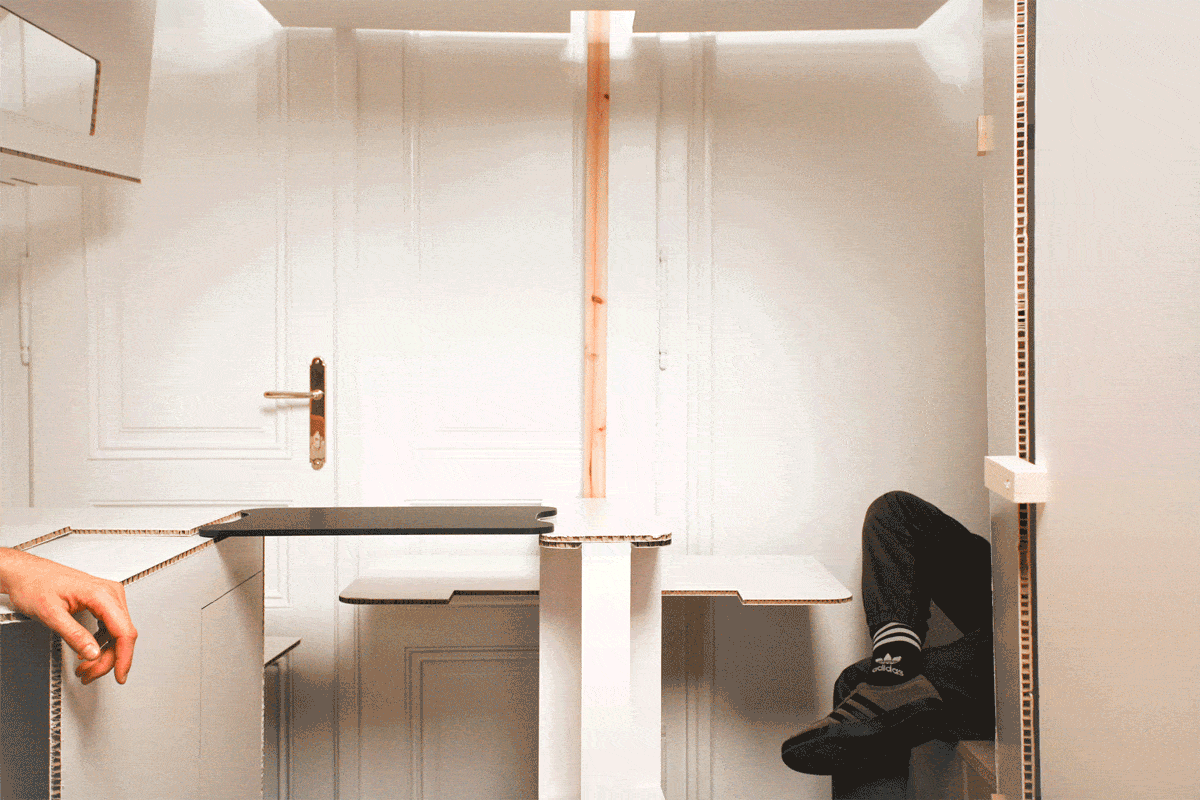

About Beneteau First 30 Interior
The Beneteau First 30 introduces a new category of compact planning cruisers, balancing sailing performance with onboard comfort in a format accessible to a wide range of sailors.
The interior features a two-cabin layout accommodating four, with a generously sized forward cabin and saloon berths comparable to those of the larger First 36. Entrance and galley area offer full standing height, while seating and sleeping spaces are optimized for comfort.
Material choices emphasize both function and atmosphere: wooden floorboards in the saloon, and cork — replacing traditional EVA foam — in the cockpit and cabin floors for a sustainable, slip-resistant surface that helps define wet and dry zones. Storage is provided through a mix of lightweight, removable textile lockers and integrated units. Magnetic double doors, first developed on the First 27, are also used here to enhance space and weight efficiency.
“Almost every project feels complex and fuzzy at the beginning – the real variable is the team behind the brief.”
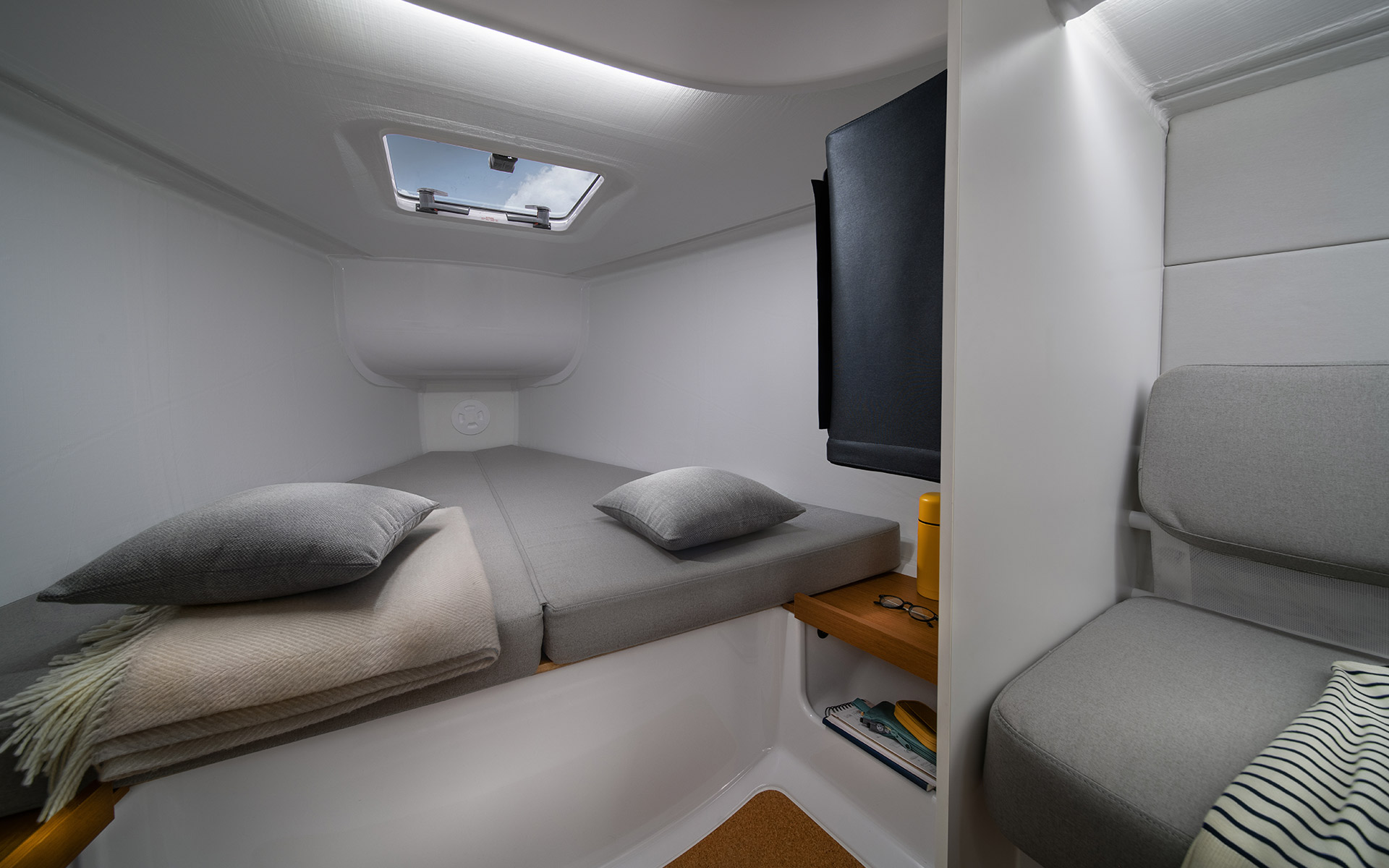

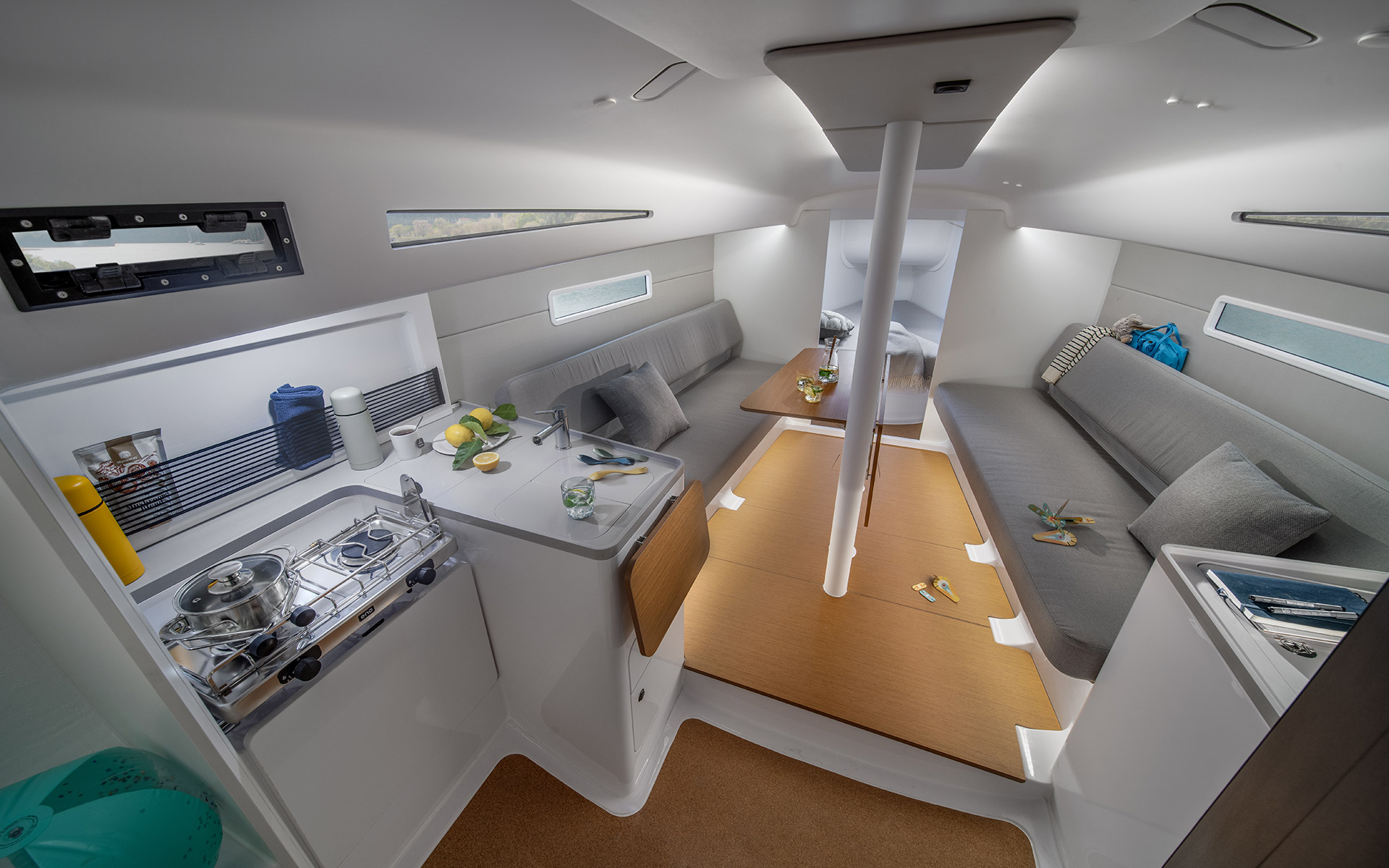
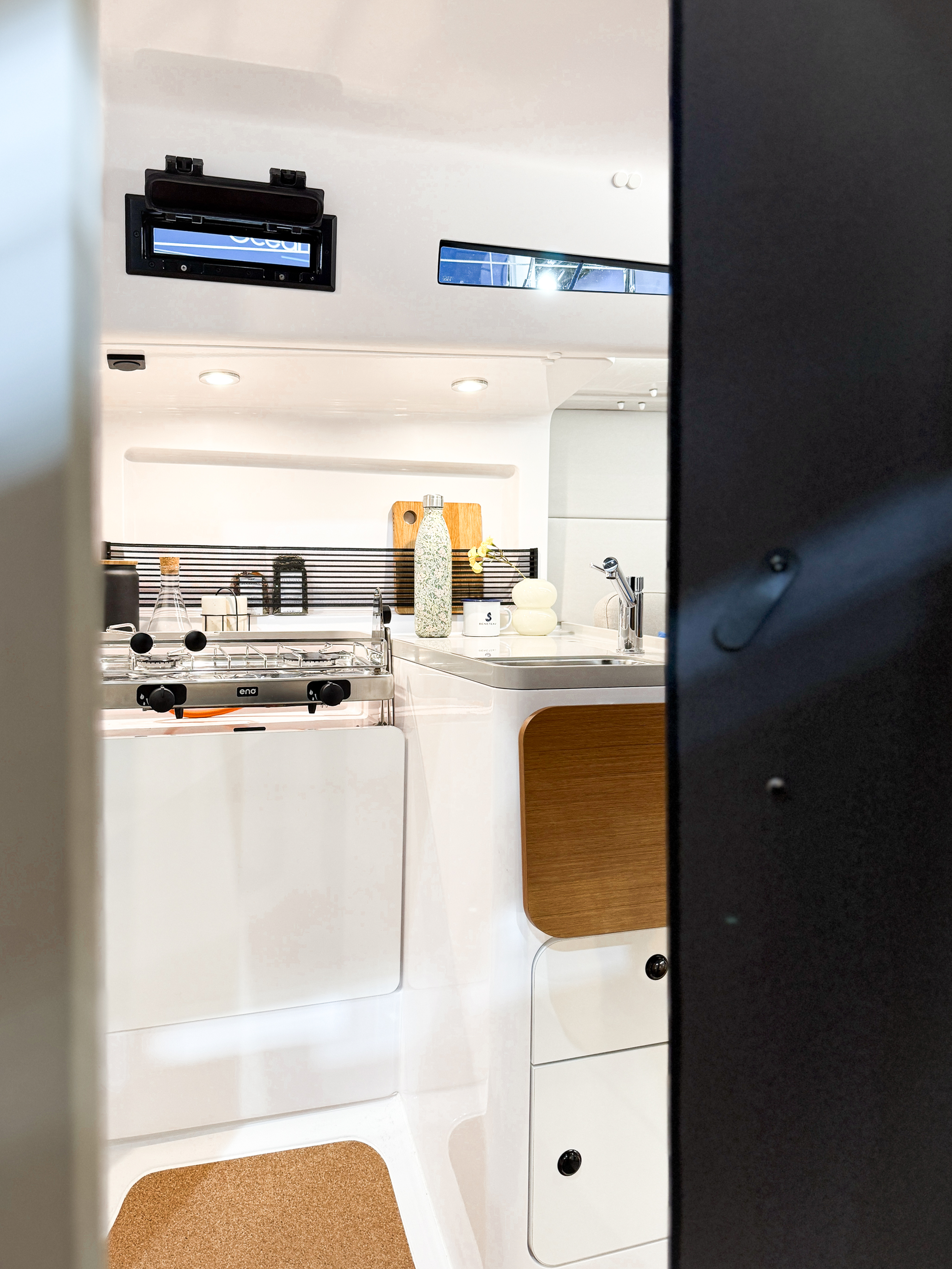
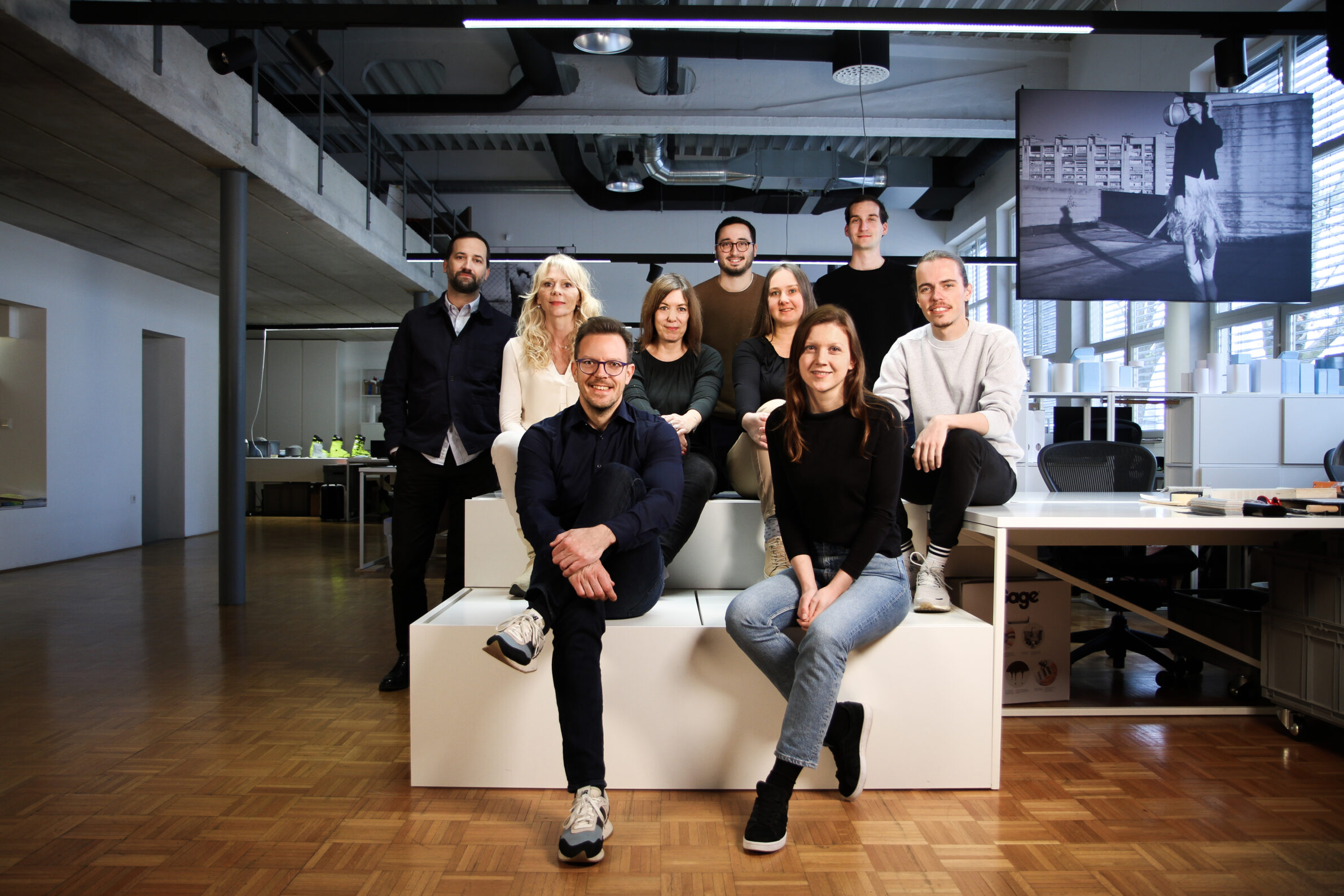
Sito is a design agency from Ljubljana, Slovenia, with more than two decades of experience shaping products and experiences for a wide range of industries. In recent years, the studio has focused mainly on designing small, mass-produced interiors for caravanning and sailboat manufacturers.
What defines Sito’s work is its holistic approach, bringing together desirability, viability, and feasibility to create finished products that resonate with users and succeed on the market. The team leads the innovation process with a strong emphasis on de-risking – through opportunity validation, user research, and an iterative design approach and supporting clients all the way through to industrialisation.
Project
Beneteau First 30 Interior
Year of production
2025
Photography
Beneteau, Sito
Edited by
Blažka Drnovšek


